Table of contents
Curry powder ( organic?) is a spice mixture from Indian cuisine. "Curry" is also the name given to various Asian sauces with different compositions. It is not always clear whether commercially produced curry mixtures are still raw.
Use in the kitchen
The composition of curry powder can vary greatly and is based on Indian masalas. The finished powder was created in Great Britain due to Indian influences and often contains a very high proportion of turmeric.
This curry powder, as it is used outside of Asia, is less common in Indian cuisine. There, spice mixtures (known as masala, e.g. garam masala) are also used, which are usually mixed yourself and roasted in a pan or in the oven before use.
What is curry powder made of? The main ingredients in many yellow spice mixtures are turmeric, coriander, cumin,black pepper and fenugreek seeds. Also often included are mustard seeds, fennel, cardamom, mace, cinnamon, chili peppers, paprika powder, cayenne pepper and ginger.
The powder is used to make curries, a one-pot dish from South and Southeast Asian, as well as Japanese cuisine based on a creamy sauce, traditionally with meat, fish, tofu and vegetables. Madras curry sauce is very popular in Indian curries.
In addition to curry powder, you can also find curry pastes on the market. These seasoning pastes mostly come from Southeast Asian cuisine, e.g. Thai curry paste. The pastes have a different composition and contain, for example, galangal root, lemongrass, garlic and shallots.
Curry powder should not be confused with curry leaf powder. This consists of crushed and roasted curry leaves.
Making your own curry powder
Prepare the individual spices for the curry.
Ingredients for a sample mix : 4 tablespoons turmeric, 2 tablespoonsblack peppercorns, 2 tablespoons fenugreek seeds, 2 tablespoons fennel seeds, 1 tablespoon chili flakes (dried), 2 teaspoons cumin seeds, 2 teaspoons coriander seeds, 2 teaspoons cloves.
Preparation: Grind the ingredients to the desired fineness using a mortar or a mill. Mix all the ground ingredients well and then store in an airtight container in a cool, dark place. If you roast the black pepper, fennel seeds, cloves, cumin and coriander before grinding, you will get a more intense aroma, but the spice mixture will no longer be raw.
Vegan recipe for yellow curry with tofu and vegetables
Ingredients (for 2 people): 250 g tofu, 2 tbsp mild curry powder, 2 tbsp rapeseed oil, 1 clove of garlic, 30 g ginger, 1 chili pepper, 3 spring onions, 250 g asparagus, 200 ml coconut milk, 200 ml low-salt vegetable stock, 100 g mung bean sprouts, 1 lime.
Preparation: Cut the tofu into 2 cm cubes. Mix 1 teaspoon of curry powder with 1 tablespoon of rapeseed oil, mix with the tofu and leave to marinate for at least 15 minutes. In the meantime, peel the ginger and dice finely together with the garlic and chili. Wash the spring onions. Peel the asparagus and cut off the stem ends. Cut the spring onions and asparagus diagonally into 3 cm long pieces.
Fry the tofu all over in a wok or non-stick pan and remove. Add 1 tbsp rapeseed oil to the pan and fry the garlic, ginger, chilli, spring onions and asparagus for 5 minutes, stirring. Sprinkle with 1 tsp curry powder and fry briefly. Add the coconut milk and stock, bring to the boil and cook at a medium heat for 5-7 minutes. Mix in the tofu and half of the soy sprouts and cook for 3 minutes.
Season the curry with a few dashes of lime juice. Sprinkle with the remaining bean sprouts and serve.
If you use oat cream instead of coconut milk, the dish will contain fewer saturated fats and a better ratio of omega-3 to omega-6 fatty acids.
Vegan recipes with curry powder can be found under the note: " Recipes that have the most of this ingredient ".
| Not only vegans or vegetarians should read this: Vegans often eat unhealthily. Avoidable nutritional errors. |
Purchasing - Storage
At major retailers such as Coop, Migros, Denner, Volg, Spar, Aldi, Lidl, Rewe, Edeka, Hofer and Billa you can buy curry powder in various degrees of spiciness, some of which are organic. Organic supermarkets such as Denn's Biomarkt and Alnatura, drugstores and health food stores also sell curry powder.
It is not possible to determine with certainty whether spices are still raw after the drying process; there is usually no certificate to this effect available in stores. Specialty shops occasionally offer gently dried spices in raw food quality.
The availability of curry powder varies depending on the size of the store, catchment area, etc. Our recorded food prices for the DA-CH countries can be found above under the ingredient image - and by clicking you can see their development at various suppliers.
Storage tips
Curry powder, like other spices, should be stored in a dry, cool place and well sealed to keep the aroma as intense as possible - over a long period of time, however, constant loss is unavoidable. As long as the spice mixture does not come into direct contact with liquid and thus begin to mold, it will last for years. Spices have the longest shelf life in their unprocessed form, i.e. not ground, raw and not roasted.
Ingredients - Nutritional values - Calories
Here we realistically show you the ingredients of spices and herbs per 1 g (instead of per 100 g as usual).
1 g of curry powder contains 3.25 kcal. 0.56 g of carbohydrates, 0.14 g of fat and 0.14 g of protein are also contained in 1 g of the spice mixture. 1
Manganese, vitamin E and iron are the most important essential nutrients that curry powder offers. 1 However, because the amount consumed is so small, they and the macronutrients do not contribute significantly to meeting the daily requirement. The secondary plant substances in this ingredient are far more important for its health value. Since all spices contain many health-promoting ingredients, we deliberately avoid the term superfood here.
The complete ingredients of curry powder, the coverage of the daily requirement and comparison values with other ingredients can be found in our nutrient tables. In the article Nutrients explained you will get a detailed insight into the topic.
Effects on health
Is curry powder healthy? Spices are rich in secondary plant substances - including curry powder. These bioactive substances influence numerous effects in the body and have health-promoting properties. They are therefore an important component of a healthy and varied diet.
Turmeric, a main ingredient in many curry mixtures, contains curcumin, which has anti-inflammatory, antioxidant, hepatoprotective, chemopreventive, chemotherapeutic, antiproliferative, wound healing and antiparasitic effects.
In addition to curcumin, eugenol, which is contained in curry powder, is also responsible for the fact that even individual meals improve blood flow to the brachial artery (large artery in the upper arm). This can have an overall positive effect on cardiovascular health. 9 Regularly eaten curry dishes also have a supportive effect in maintaining blood sugar and triglyceride levels, which is also attributed to the relatively high proportion of curcumin in curry powder. 10
For further potentially health-promoting effects, check out the individual spices in the spice blend, such asblack pepper, cumin, chili, cloves, cardamom and cinnamon.
Dangers - Intolerances - Side effects
There are isolated allergic reactions to curry powder: contact dermatitis, oral allergy syndrome (OAS), also known as pollen-associated food allergy syndrome (PFAS) and rare cases of anaphylaxis. 3,4
Turmeric and therefore curry powder can be diluted with lead chromate, a yellow pigment. Food contaminated with lead can have serious health effects. 5 Spices can also be contaminated with pesticides and pesticides (such as ethylene oxide) as well as germs and mold. 6,7
Ecological footprint - animal welfare
The ecological footprint of a food depends on various factors. The type of agricultural production (conventional vs. organic), average or seasonal or regional production, domestic production or import by truck, ship or plane, different types of packaging and whether the goods are fresh or frozen all play a decisive role. 11
The Danish Big Climate Database shows a CO 2 footprint of 4.7 kg CO 2 eq/kg for curry powder. 14
The water footprint of spices in general is about 7000 l/kg. In comparison, vegetables have 300 l/kg and cereals 1600 l/kg. 12
There are initiatives and labels for spices such as SSI (sustainable spices initiative) or NSSP (National Sustainable Spice Program), which promise certain sustainability standards. But Rainforest Alliance and UEBT (Union for Ethical Biotrade) also have programs that bring the cultivation of herbs and spices onto a sustainable track through certain supply chain management and certification systems. In addition to preserving biodiversity in the countries where the spices are grown, workers' rights are also secured. Standards for farms and supply chains should take into account the sustainable aspects of production and trade. However, the extent of implementation varies greatly from organization to organization. 13
Worldwide occurrence - cultivation
Curry powder is made up of various spices that are grown in several Asian and European countries. The curry powder we know today is an "invention" of the English in the 18th century to make Indian dishes easier to recreate. 8 In India, the spices are traditionally used individually and added to a dish at different times.
Further information
What does curry mean in German? Curry comes from English, but is also the official term in German. So there is no translation for this word.
The word curry comes from the Tamil word "Kari" (கறி), which means "curry/sauce", "meat/game" or "black pepper".
Alternative names
The name of curry powder in English is curry powder.
Bibliography - 13 Sources
| 1. | USDA United States Department of Agriculture. |
| 3. | Ohnuma N, Yamaguchi E, Kawakami Y. Anaphylaxis to curry powder. Allergy. 1998 Apr;53(4):452-4. |
| 4. | Yagami A, Nakazawa Y, Suzuki K, Matsunaga K. Curry spice allergy associated with pollen-food allergy syndrome and latex fruit-syndrome. J Dermatol. 2009 Jan;36(1):45-9. |
| 5. | Forsyth JE, Nurunnahar S, Islam SS, Baker M, Yeasmin D, Islam MS, Rahman M, Fendorf S, Ardoin NM, Winch PJ, Luby SP. Turmeric means "yellow" in Bengali: Lead chromate pigments added to turmeric threaten public health across Bangladesh. Environ Res. 2019 Dec;179(Pt A):108722. |
| 6. | Focus-Online. Hersteller ruft Currypulver wegen Ethylenoxid-Belastung zurück. 2023. |
| 7. | Verbraucherzentrale. Gewürze als Urlaubs-Mitbringsel: Risiken durch Keime. 2023. |
| 8. | Collingham L. Curry: A Tale of Cooks and Conquerors. Oxford University Press: Oxford;2006. |
| 9. | Nakayama H, Tsuge N, Sawada H, Masamura N, Yamada S, Satomi S, u. a. A single consumption of curry improved postprandial endothelial function in healthy male subjects: a randomized, controlled crossover trial. Nutr J. 28. Juni 2014;13:67. |
| 10. | Kwon Y. Association of curry consumption with blood lipids and glucose levels. Nutr Res Pract. April 2016;10(2):212–20. |
| 11. | Reinhardt G, Gärtner S, Wagner T. Ökologische Fussabdrücke von Lebensmitteln und Gerichten in Deutschland. Institut für Energie - und Umweltforschung Heidelberg. 2020. |
| 12. | Mekonnen MM, Hoekstra AY. The green, blue and grey water footprint of crops and derived crop products. Hydrol. Earth Syst. Sci. 2011; 15: 1577-1600. |
| 13. | Wenzig J. Nachhaltigkeitsclusterung von Gewürzen. Forschungsprojekt. ZNU Zentrum für Nachhaltige Unternehmungsführung. 2023. |
| 14. | CONCITO. The Big Climate Database, version 1. Curry powder. 2021. |

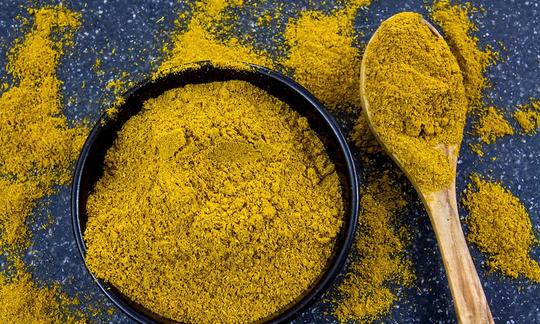

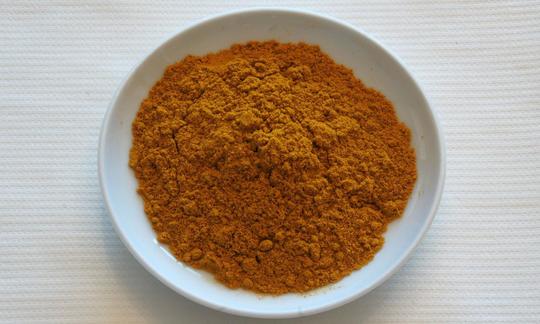

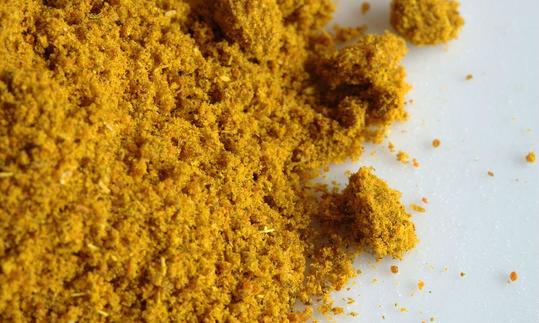

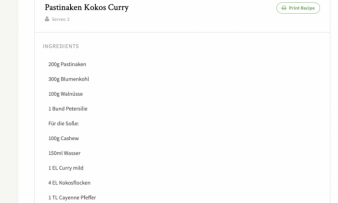
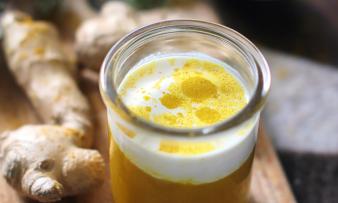
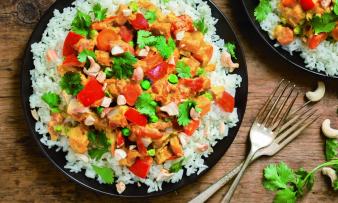





Comments